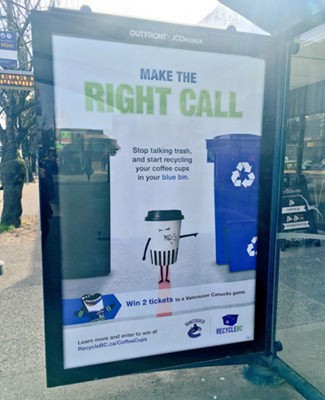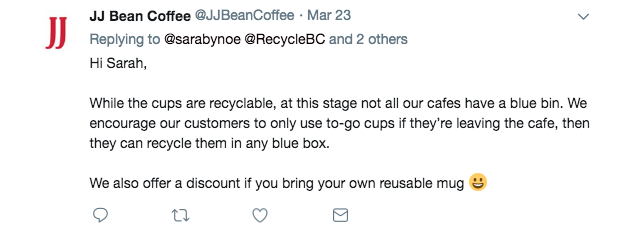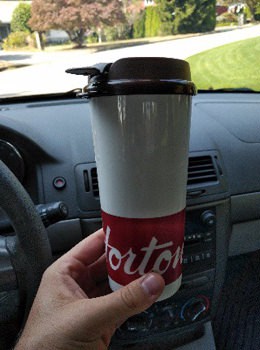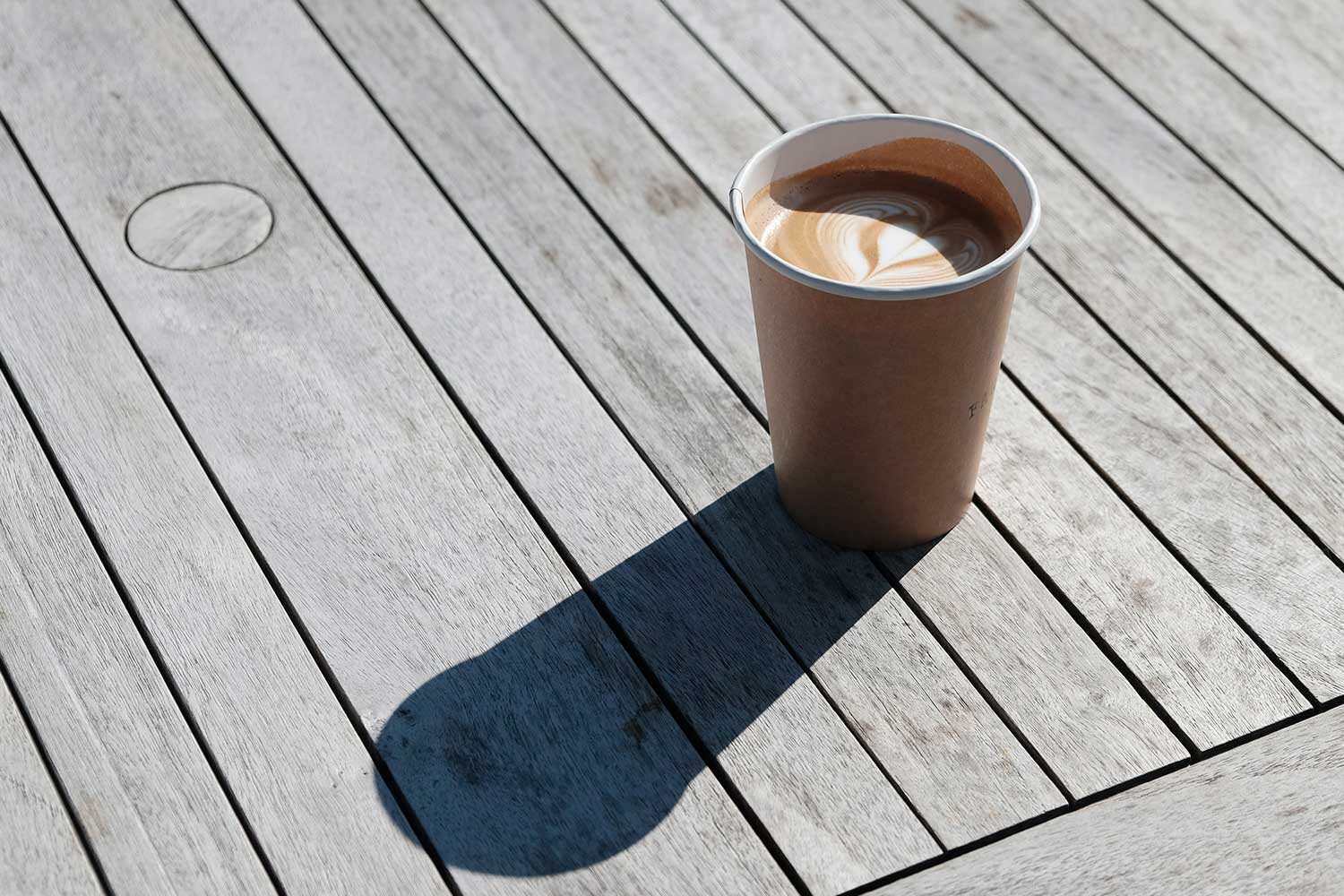Your Coffee Cup Makes Me Hate You
Asparagus’ own Environmentalist from Hell reads us the riot act for our wasteful coffee habits.
Last week I called my friend an a-hole for getting a paper cup at a coffee shop. He was drinking his coffee inside the shop, yet his cup said he was having it “To Go.” He was a liar and a wasteful consumer: in other words, an a-hole.
I asked him why he made this terrible life choice.
“I thought I might not finish my coffee before I had to go.”
“Then why not get it in a ceramic cup first, and ask for a to-go cup if you don’t finish it?”
“It’s… just easier this way.”
“Do you like the taste of drinking out of paper and plastic?”
“Uh…”
I gave him a look and called him an a-hole.
His look of shame said I was right.
Later, I thought to myself: “Sara, you can’t go around calling out all your friends for their wastefulness, you’ll have no friends left.” I texted him to apologize. He said he was fine with it; he took it as a sign I was passionate about recycling. He’s right.
Lately, I’ve been wanting to call out strangers on the street, questioning their choice of coffee vessel. I’ve held back because friends thought I would get punched in the face. What’s a nice way to ask strangers about their wastefulness? What about, “Excuse me, can you spare a minute to tell me about why you decided to create more landfill waste today? I mean, you knew you were going to buy a coffee when you left your home, right?” Too aggressive?
The City of Vancouver, where I live, recently released stats that, every week, an estimated 2.6 million hot and cold paper beverage cups are thrown in the garbage. There are 631,468 people living in Vancouver, according to the 2016 census. That means your average person in this city is getting four paper cups a week and chucking them in the trash bin.
There are words and pictures on the recycling station to indicate what should go where. I don’t know how it could be any clearer.
Although, I’m surprised the number isn’t higher. Since writing for Asparagus and playing frazzled moms and teachers on TV doesn’t pay all my bills, I also work at a rental venue as a building manager. I’m there to make sure no one burns the building down or drills holes in the walls, and I make sure that renters adhere to our zero-waste initiative. Every time I work, I see an adult standing in front of the recycling station frozen, as if they had just been asked “How big is the garbage island in the Pacific Ocean at this very moment?”
There are words and pictures on the recycling station to indicate what should go where. I don’t know how it could be any clearer. The drawing for “Mixed Containers” includes a coffee cup’s plastic lid, a water bottle, a juice box, and a plastic milk jug. “Mixed Paper” has a photo of the cardboard sleeves people use on to-go cups, along with other paper products.
Each shift I work, I witness someone standing stunned at the station, and eventually saying to themselves “Eff it” (I imagine), as they put their whole coffee container (lid, sleeve, and cup) in the garbage. I feel a pang of sadness and rage in my chest. Why can’t they figure it out? Why don’t they care?!
Apparently, reading is hard and recycling is confusing. What we can and can’t recycle seems to change all the time. On Good Friday, Recycle BC tweeted that foil from Easter eggs can go in the blue bin. Awesome, but who knew?

A Recycle BC bus shelter ad
They also just put out a bus shelter campaign telling us that coffee cups can go in Mixed Containers bins. I called my friend an a-hole at the JJ Bean on Main Street, which has one of the bus shelter ads directly across the street. When my friend went to dispose of his paper cup, he asked the barista where it should go. She said in the landfill. Wha?! But what about the Recycle BC initiative?!?
I later tweeted at JJ Bean and Recycle BC about this, and got this response:

Aside from their misspelling of my first name (which is clearly visible in my Twitter handle without the superfluous ‘h’), what’s wrong with this tweet is that JJ Bean is relying on consumers to handle their own coffee cup recycling. How hard is it to get a blue bin? As hard as it is to get people at my work to follow instructions with words and pictures?
Then again, does it even matter? Lined paper cups are difficult to recycle, and some folks will tell you they often end up in the landfill, regardless of whether they were put in a recycling bin. I tweeted at Recycling Alternatives, a private company who picks up recycling at a friend’s workplace but doesn’t pick up coffee cups. They explained that “Coffee cups are complicated due to the fusion of plastic and paper in the cup.”
They also tweeted me a CBC video from 2015 showing the contents of Tim Hortons and Starbucks recycling stations ending up in the landfill, as well as articles about China’s crackdown on foreign garbage, Starbucks’ recently announced investment in developing a greener coffee cup, and this video about hard-to-recycle items.
It all started to feel pretty hopeless. But then, I thought back to this past summer, when I worked with a fancy real estate agent, the kind selling $3 million penthouses in the suburbs. I was hired to help punch up the jokes and gags in his comedic real estate videos. We only had three or four meetings over a few weeks, but during that time he heard my rant about to-go cups at least twice.
My heart grew three sizes that day. I’d successfully nagged one person into making a sustainable choice!
A month later, he shocked me with a text: “wanted to let you know I bought a reusable mug. Partially since it’s really tacky looking, but mostly because ever since you mentioned the waste of coffee cups I’ve been aware of how brutal it really is.” My heart grew three sizes that day. I’d successfully nagged one person into making a sustainable choice!

The reusable cup the author’s nagging persuaded a colleague to buy
When I messaged him for permission to use his photo in this article, he went on to say: “honestly you did change the way I look at waste. I rarely buy coffee with a paper cup now and also use reusable bags. Never really thought about it before we had that conversation.”
The three Rs are: Reduce, Reuse, and Recycle. We have become so hung up on making things recyclable, we have forgotten that the first and most important step is to reduce. Or at least, I have.
Maybe I should start nagging people on the street. It only took a few conversations to get through to Mr. Real Estate. If it worked once, it should work again. Right?
